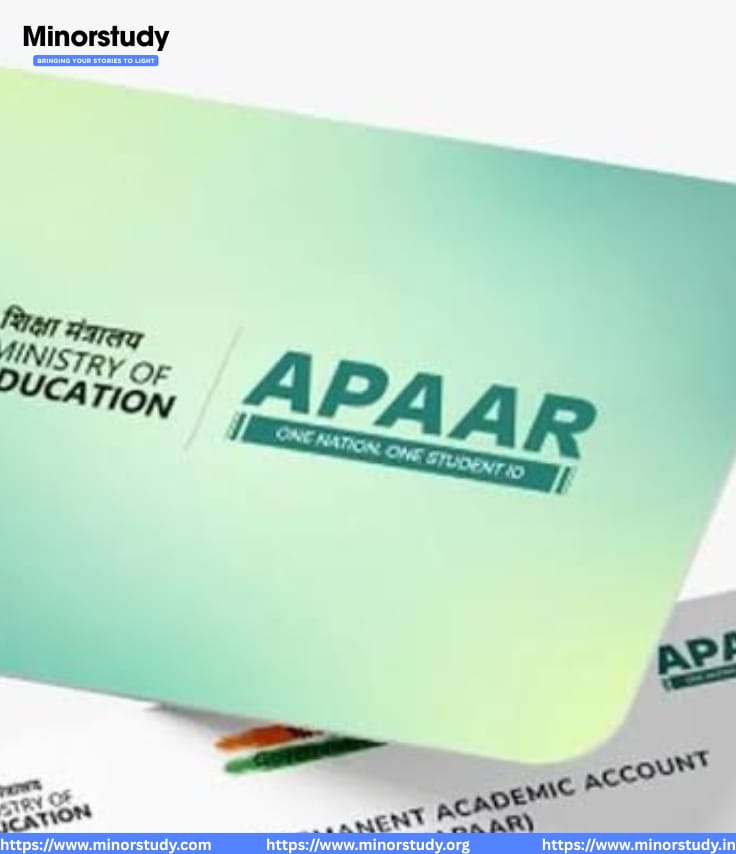7 Powerful Reasons Why the APAAR ID Card Is a Game-Changer for Indian Education
The APAAR ID Card, short for Automated Permanent Academic Account Registry, is a groundbreaking initiative by the Government of India under the ambitious National Education Policy (NEP) 2020. At its heart, the APAAR ID aims to revolutionize how academic records are maintained, accessed, and used throughout a student’s life — making education more transparent, efficient, and inclusive.
- 📚 History of the APAAR ID Card
- 🔍 Key Facts About APAAR ID Card
- 📅 Timeline of APAAR ID Rollout
- 💡 Significance of the APAAR ID Card
- 1. One ID, One Record, One Nation
- 2. Empowering Students Digitally
- 3. Portable and Permanent Academic History
- 4. Holistic Progress Record
- 5. Boost to Employment and Skill Recognition
- 💬 FAQs on APAAR ID Card
- ❓ Is the APAAR ID mandatory for students?
- ❓ How do I generate an APAAR ID?
- ❓ What documents are needed?
- ❓ Is it safe to share Aadhaar details?
- ❓ Can private schools participate?
- 🌐 Observance and Implementation
- 🎯 Importance in Life and Daily Impact
- 🎉 Wishing and Promoting APAAR
- 📌 Important Points Summary
- ✅ Conclusion: Why APAAR Is a Future-Ready Innovation
This article covers everything you need to know about the APAAR ID card — its origin, benefits, timeline, impact on daily life, and why it’s being called the ‘One Nation, One Student ID’.
📚 History of the APAAR ID Card
The origin of the APAAR card lies in NEP 2020, which proposed the National Digital Education Architecture (NDEAR) — a unified digital ecosystem for students, teachers, and educational institutions. As part of this, the Ministry of Education introduced APAAR (Automated Permanent Academic Account Registry) to create lifelong academic IDs for students.
Before APAAR, academic data was fragmented — scattered across schools, boards, and universities. There was no central registry for educational achievements, making it hard to track or transfer records. APAAR was envisioned to change that permanently.
🔍 Key Facts About APAAR ID Card
| Feature | Details |
|---|---|
| Full Form | Automated Permanent Academic Account Registry |
| Launched By | Ministry of Education, Government of India |
| Purpose | To assign a unique lifelong student ID and digitally store academic data |
| Part of | National Education Policy (NEP) 2020 |
| Type of ID | Unique 12-digit digital number (linked to Digilocker) |
| Coverage | Pre-school to Higher Education, including skill certifications |
| Voluntary or Mandatory? | Voluntary, but highly recommended by the government |
| Connected Platform | Digilocker, ABC (Academic Bank of Credits), NDEAR |
| Who Benefits | Students, parents, schools, universities, employers |
📅 Timeline of APAAR ID Rollout
2020: NEP 2020 recommends development of a centralized digital education platform.
2021: NDEAR (National Digital Education Architecture) is launched to unify educational data.
2022: Academic Bank of Credits introduced to support flexible learning and data tracking.
2023: Pilot projects begin for APAAR ID generation in states like Gujarat and Maharashtra.
2024: APAAR ID integrated into Digilocker for pan-India rollout.
2025: Over 20 crore students are expected to be enrolled under APAAR.
💡 Significance of the APAAR ID Card
The significance of APAAR goes beyond just a digital ID. It promises to reshape the educational journey of every Indian student.
1. One ID, One Record, One Nation
APAAR brings the concept of “One Nation, One Student ID”, where every student’s academic journey is recorded in one centralized place, right from early schooling to post-graduation.
2. Empowering Students Digitally
With APAAR, students can easily:
Access their report cards
Download certificates and achievements
Share records for higher education and jobs — all digitally
3. Portable and Permanent Academic History
Students who migrate between states or schools often face document loss or mismanagement. APAAR ensures academic continuity, no matter where they go.
4. Holistic Progress Record
It tracks not just academic results but co-curricular activities, sports, vocational training, and even NEP-mandated skill-based achievements.
5. Boost to Employment and Skill Recognition
Employers and institutions can verify records in seconds via APAAR and Digilocker, eliminating forged certificates.

💬 FAQs on APAAR ID Card
❓ Is the APAAR ID mandatory for students?
No, it is voluntary, but highly recommended. Schools are encouraged to take consent from parents.
❓ How do I generate an APAAR ID?
Schools can create APAAR IDs for students through the U-DISE+ platform, with parent/guardian consent. The data is then linked with Digilocker.
❓ What documents are needed?
Basic details like:
Aadhaar (for authentication)
Student name
Date of birth
School details
No physical documents are required; data is pulled digitally.
❓ Is it safe to share Aadhaar details?
Yes. The data is stored securely within the Education Ecosystem under government protocols.
❓ Can private schools participate?
Absolutely. APAAR is for all — government, aided, and private institutions.
🌐 Observance and Implementation
The Ministry of Education has set guidelines for schools to:
Obtain parental consent
Create Digilocker accounts for students
Update U-DISE+ data to sync with APAAR
Assign IDs and ensure record accuracy
States like Delhi, Maharashtra, Gujarat, Tamil Nadu, and Karnataka are actively participating in the rollout.
The initiative is often observed during National Education Day (November 11) and NEP awareness campaigns.
🎯 Importance in Life and Daily Impact
Here’s how APAAR ID will positively impact daily life:
📌 For Students
Never lose certificates again
Simplifies admission process at every level
Encourages participation in extracurriculars (as they’re recorded too)
Acts as a permanent digital CV
📌 For Parents
Monitor academic and extracurricular growth
Easy access to all school-related documents
Useful while switching schools or cities
📌 For Teachers and Schools
Reduced paperwork and data duplication
Real-time academic analytics
Easier student transfers
📌 For Society and Nation
Better planning of educational policies
Insights into learning outcomes and dropouts
Helps track progress on national educational goals (like SDG-4)
🎉 Wishing and Promoting APAAR
On this transformational journey, we wish every learner and educator to embrace APAAR as a step toward a smarter and more equitable India.
May this APAAR ID empower every child to become a lifelong learner, a skilled professional, and a proud contributor to Bharat’s future. 🌟
Let us all say together:
“Ek Bharat, Shikshit Bharat, APAAR Bharat!”
📌 Important Points Summary
APAAR stands for Automated Permanent Academic Account Registry.
It’s a 12-digit unique student ID to track lifelong learning.
It enables digitally stored academic and co-curricular records.
Linked to Digilocker and Academic Bank of Credits.
Voluntary but encouraged for all institutions.
Aims to cover 20 crore+ students across India.
✅ Conclusion: Why APAAR Is a Future-Ready Innovation
The APAAR ID is not just another digital initiative — it is a revolution in how we perceive, track, and value education in India. It shifts the focus from fragmented learning to continuous, holistic, and portable academic growth.
In a world driven by data, transparency, and mobility, APAAR equips every Indian student with a passport to future success — digital, accessible, and secure.
Whether you’re a student, parent, teacher, or policymaker, APAAR is your gateway to smarter education. Embrace it, promote it, and be part of this national academic transformation.








